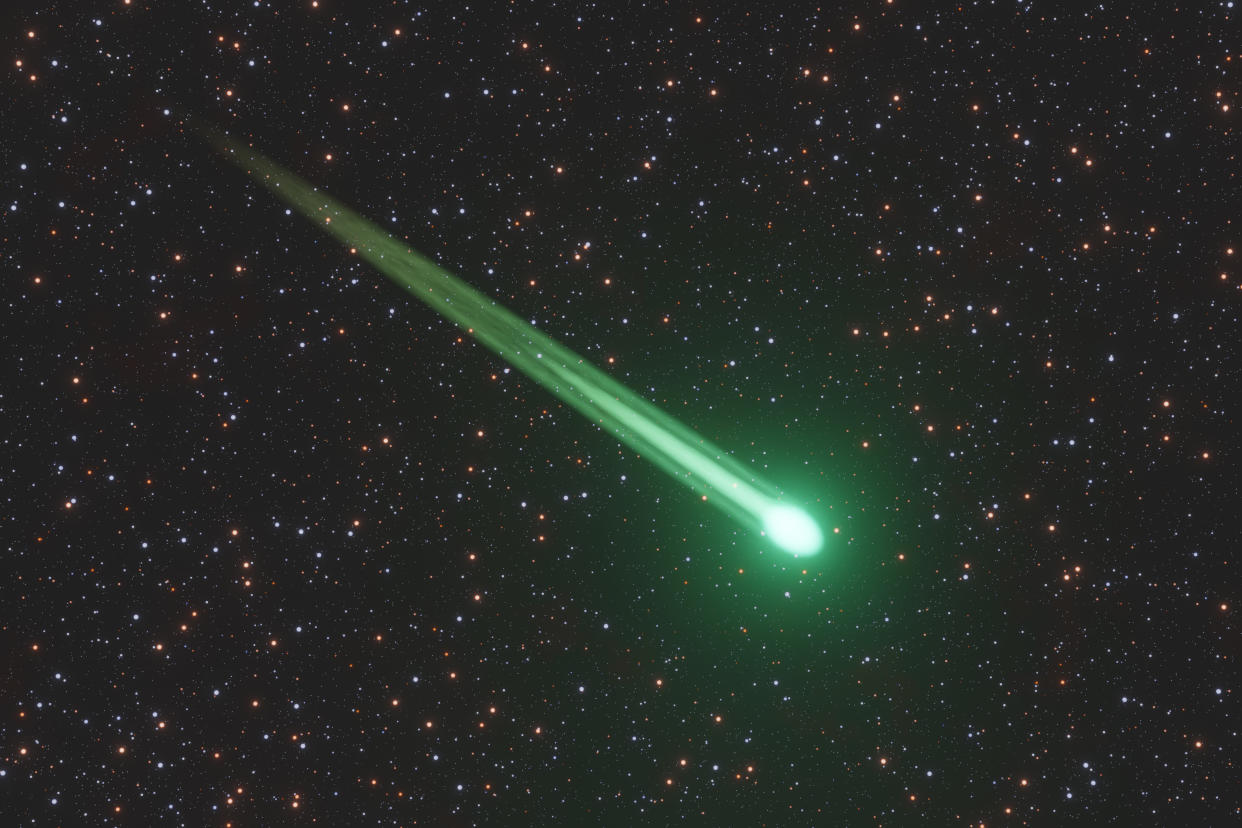How to watch the Eta Aquarids, the annual meteor shower that peaks this weekend

Just weeks after this year’s total solar eclipse, there’s another reason to look up: the Eta Aquarid meteor shower. The meteor shower, which contains remnants of Halley’s comet, is set to peak this weekend and will be visible in both the Northern and Southern Hemispheres.
Before you start eyeing the sky for the celestial event, here’s what you need to know.
🌠 What are meteor showers?
A meteor shower occurs when Earth passes through a trail of debris left by a comet, causing numerous meteors, or "shooting stars," to appear to streak across the night sky. This particular meteor shower got its name as it appears to hail from the constellation Aquarius.
🗓️ How common is the Eta Aquarid meteor shower?
The Eta Aquarid is an annual event, occurring each year between April 15 and May 27. The meteor shower’s peak — when you are likely to see the most action in the sky — tends to fall around May 5 or 6. This can change yearly depending on factors such as the position of the earth in its orbit and the influence of the moon.
🌎 Where do I have to be to view the Eta Aquarids?
The Eta Aquarid is most prominent in the Southern Hemisphere and close to the equator, but it is visible from both. If you want to find the event in the sky, your best bet is to seek it out at its peak, which is Sunday, May 5. According to the Associated Press, 10 to 30 meteors are expected to be visible per hour in the Northern Hemisphere
Experts recommend getting outside around 2 a.m. local time to watch, in order to get your eyes adjusted to the darkness and make the shower more visible. The shower will continue through dawn. For the best viewing experience, find a location away from light pollution.
👓 What do I need to view the Eta Aquarids?
There’s no need to wear special glasses, as in an eclipse. However, NASA recommends that you lay flat on your back with your feet facing east to view as much of the night sky as possible. You may want to bring a sleeping bag, as well as warm clothes, to be comfortable during this activity.
🌌 Where is Eta Aquarid meteor shower in the sky?
To spot the Eta Aquarid meteors, face east after midnight, but avoid focusing solely on the Aquarius constellation, since the meteors streak across the entire night sky. Scan nearby constellations, too, because some meteors closer to the radiant, or central origin point, may have shorter trails and can easily be missed if you look only at Aquarius.


